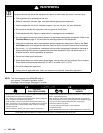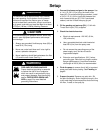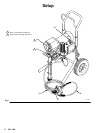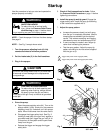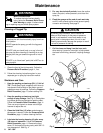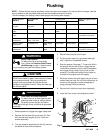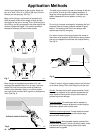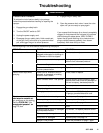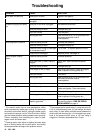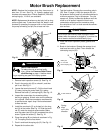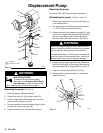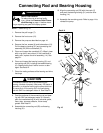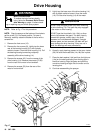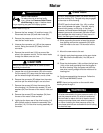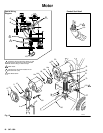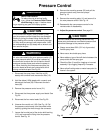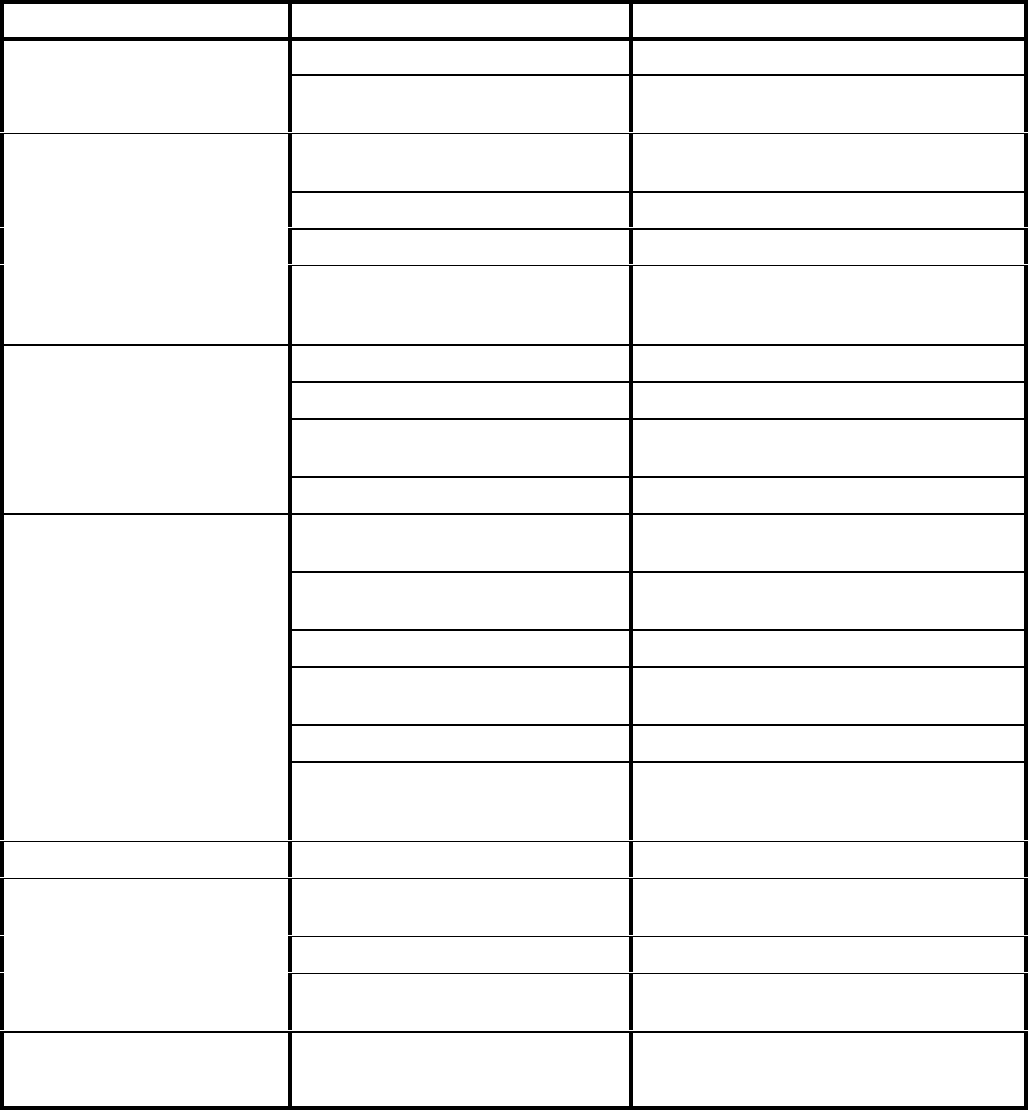
12 307-830
Troubleshooting
PROBLEM CAUSE SOLUTION
Paint leaks into wet-cup
Packing nut is loose
T
ighten. See page 8.
Throat packings are worn or
damaged
Replace packings. See page 14.
Excessive surging from spray
gun
Spray tip or fluid filter is plugged
Disassemble and clean.
Spray tip too big or worn
Change spray tip.
Paint too viscous
Thin the paint.
W
rong type hose
Use minimum 50 ft (15 m), grounded, flex
-
ible hose (wire braid hose is
unacceptable).
Not enough paint pressure
Pressure setting too low
Increase the pressure.
Spray tip too big or worn Change the spray tip.
Pressure control frozen or damaged
by overpressurization
3
T
ry to thaw
2
, or replace pressure control.
Pump worn or damaged
Replace pump. See page 14.
T
ails or fingers in spray
pattern
Pressure setting too low
Increase pressure.
Fluid outlet filter (if used) is dirty or
clogged
Clean filter
. See instructions supplied
with it.
Spray tip too big or worn
Change spray tip.
Fluid supply is low or empty
Refill and prime pump. Check fluid supply
often to prevent running pump dry
.
Paint too viscous
Thin paint.
W
rong type hose
Use minimum 50 ft (15 m), grounded, flex
-
ible hose (wire braid hose is
unacceptable).
Paint runs or sags
Spray tip to big or worn
Change spray tip.
Spitting from gun Air in fluid pump or hose Check for loose connections at pump
intake and tighten. Then prime pump.
Spray tip is partially clogged
Clear tip. See page 8.
Fluid supply is low or empty
Refill and prime pump. Check fluid supply
often to prevent running pump dry
.
Static sparking from gun
Spray or work being sprayed is not
properly grounded
Correct problem before continuing. Follow
the warning section,
FIRE OR EXPLO
-
SION HAZARD
on page 2.
1
The electric motor has an over-temperature switch
which automatically resets upon cooling. If it opens
and
the
electric motor shuts itself of
f, unplug the power supply
cord
and let
the sprayer cool for 30 to 60 minutes. Always
use the lowest pressure setting needed when spraying.
Prevent overspray from restricting the motor air pas-
sages;
check and clean often.
2
Freezing
results from failure to replace the
water-base
paint or flushing water with mineral spirits, and usually
causes
permanent damage to the pressure control.
3
Over-pressurization
results from (1) using less than 50
ft
(15
m) of flexible spray
hose, (2) from using a wire braid
spray
hose, (3) from adding
a shutof
f device between the
pump
outlet and the spray gun, (4) from
attaching a spray
hose to the pressure drain valve, or (5) from using a
clogged
or incorrectly assembled filter
, if used.



